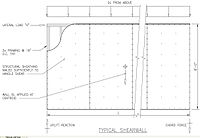
Photo from wikipedia
Magnetic carbonyl iron powder (CIP) microcapsules were created by in situ polymerization using melamine resin as the wall material and CIP as the core material. They were mixed with shellac… Click to show full abstract
Magnetic carbonyl iron powder (CIP) microcapsules were created by in situ polymerization using melamine resin as the wall material and CIP as the core material. They were mixed with shellac self-repairing microcapsules to prepare dual-functional wood coatings, and the effect of different amounts of CIP microcapsules in the Dulux Waterborne primer on the performance of the primer was investigated. The findings demonstrated that the core-wall ratio had a significant impact on the characteristics of CIP microcapsules. The microcapsule coating rate reached 57.7% when the core-wall ratio was 0.65:1. The maximum reflection loss of CIP microcapsules with the core-wall ratio of 0.70:1 is −10.53 dB. When the addition amount of shellac self-repairing microcapsules is 4.2%, and the additional amount of CIP microcapsules with a core wall ratio of 0.65:1 and 0.70:1 is 3.0%, the coating color difference is the smallest. The number of microcapsules causes a noticeable drop in the coating’s gloss, and the amount of microcapsules causes a small negative change in the coating’s adherence. With an increase in the number of microcapsules, the coating’s hardness, impact resistance, and tensile resistance first rose and subsequently fell. When the content of CIP microcapsules with core-wall ratio of 0.65:1 and 0.70:1 was 9.0%, the hardness, elongation at break and repair rate of the coating reached the best performance. According to a comprehensive analysis, when the content of CIP microcapsules with core-wall ratio of 0.70:1 is 9.0%, the coating has good performance. At this time, the coating has a color difference of 1.83, a glossiness of 19.3, an adhesion of 2 H, a hardness of 3 H, an impact resistance of 17 kg·cm, and a repair rate of 33.3%. This provides a technical basis for the application of multifunctional coatings on wooden substrates.
Journal Title: Polymers
Year Published: 2023
Link to full text (if available)
Share on Social Media: Sign Up to like & get
recommendations!